Once the fourth of July has past, it’s time to rob honey! It’s taken me some time to finally put this post together, but we finally extracted the honey from our hard working bees back in August.
We moved our bees to a new location on our property several years ago. They now reside on the east side of our chicken/rabbit house. This has proved ideal. They catch the earliest sun in the mornings so the bees can get to work early, but the building puts the bee hives in the shade shortly after noon. It’s hot enough outside in the Georgia summertime, but stuffed in a wooden box it really does get hot in full sun! The bees seem to like their new location.
The smoker is a handy tool with the bees. A little puff of smoke in the entrance of their hive and bit under the lid quiets the bees and sends them to eating a bite of honey; a nice distraction while I take the hive apart. I take the supers for honey that are above a wire grate in the hives known as the queen excluder. This grate keeps the queen in the bottom two supers, known as the brood chamber, where she can lay eggs for new bees. The excluder also keeps the larger queen bee out of the supers the workers bees fill with excess honey, keeping her from laying eggs in those frames of honey. We scored five supers this year which is a rather modest number. I didn’t tend the bees much this spring, however, so I’m thankful for what we could harvest.
I use the electric blower to physically ‘encourage’ the bees to leave the supers I’m harvesting rather than the commercial chemicals that are now standard fare.
It’s fairly hard work harvesting the supers. I like to use ‘Medium’ sized supers for honey and they can weigh nearly 60 pounds when full! This year went well even working alone. Despite the clouds of bees during the process I never encountered a mad bee. When bees get truly upset they change their tone; it heightens to a higher pitched whine and they get aggressive trying to sting anything in sight. In proper clothing you are pretty well protected, but the goal is to move slowly and deliberately, gently handling the bees and the supers. Good handling with a little smoke can let you enter into several hives like I did with no mad bees in sight.
Here’s the end of the hard work getting the supers and the honey away from the bees:
That isn’t much of a picture, but it’s the reward of the bee’s hard work and mine, now ready for extraction. I loaded the supers directly from the hives onto a small trailer, towed them to our barn, and put these supers in an enclosed room. Bees can find their missing honey very quickly and easily, so it doesn’t work just to take the supers to the other side of your property in an open setting – you need a bee proof room to extract the honey!
I use a hot knife, controlled with a built-in thermostat, to ‘cut’ the capping off the honey comb:
After the cappings are cut off, they drain into a pail and we place the frames of honey into the extractor. Our extractor holds 6 frames of honey and you turn a handle to spin the frames at a nice steady pace. The centrifugal force slings the honey out of the honey comb onto the walls of the extractor and then drains to the bottom where we can then drain it into a filter over a bucket.
Willie loves helping out and he really liked giving the extractor a whirl!
Honey is like everything else on a farm: if you raise or grow it and then eat it fresh, you’ll never go back to store bought tomatoes, eggs, or whatever. And home-grown honey is no exception!
Tina and I put together a video of the whole process too; from taking apart the hives themselves to cutting the cappings off the comb to spinning the extractor. Enjoy!

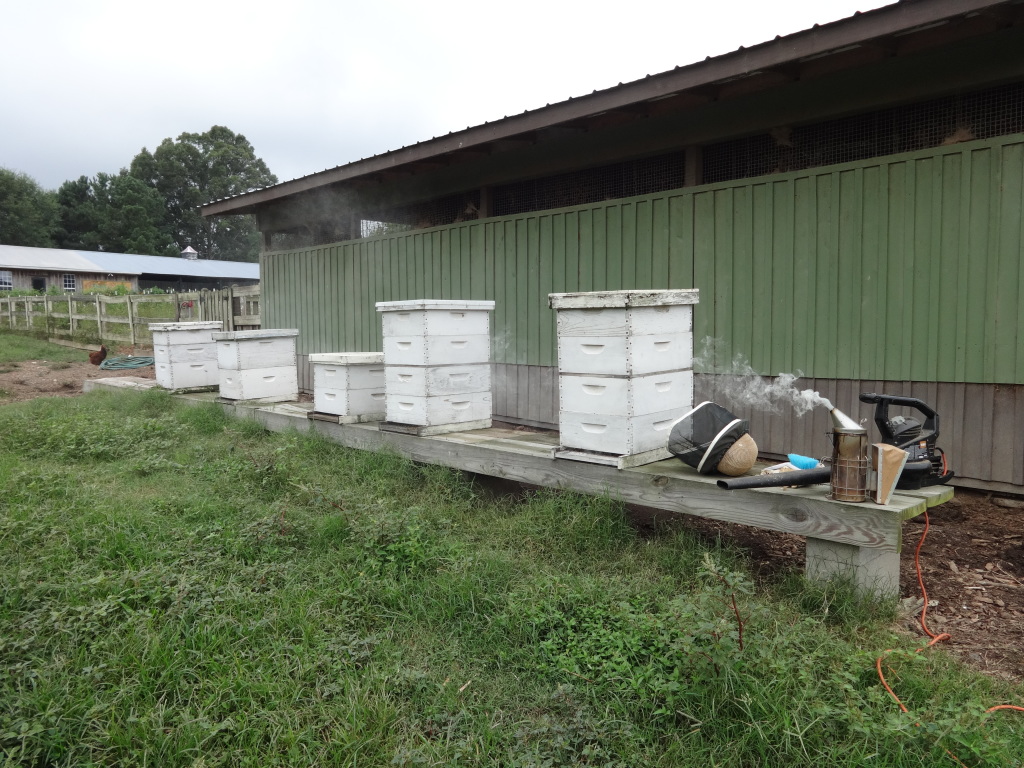

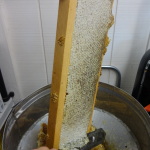
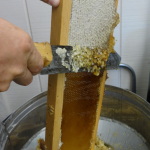
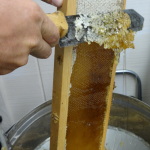
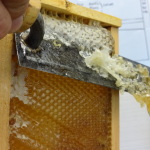

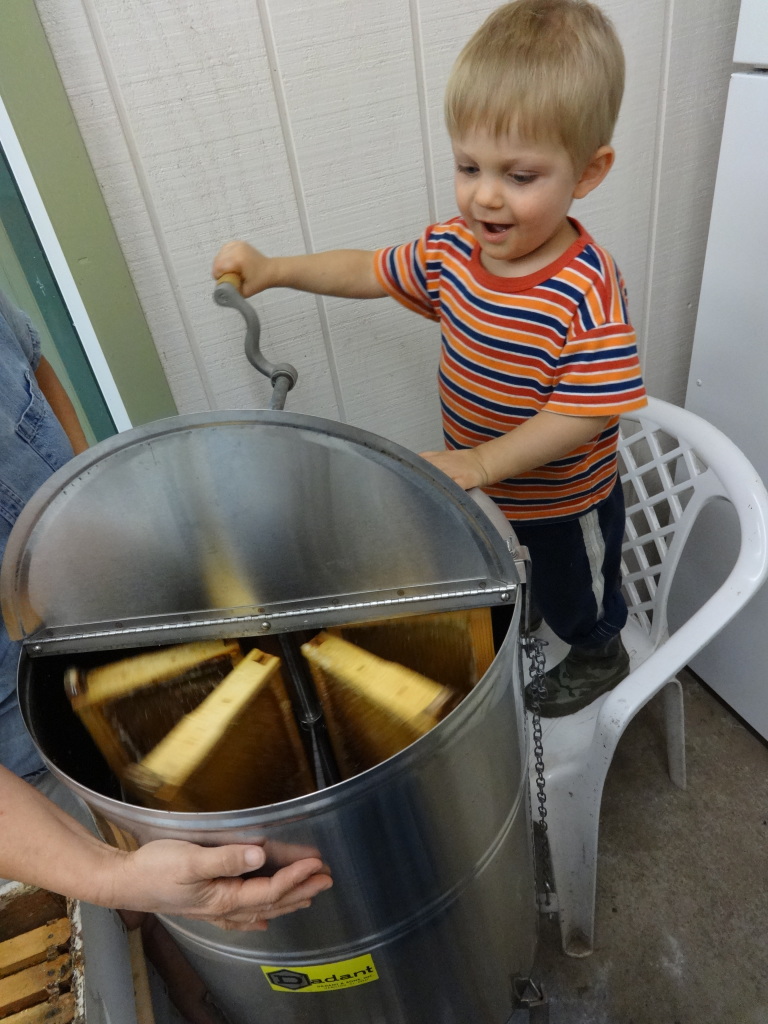
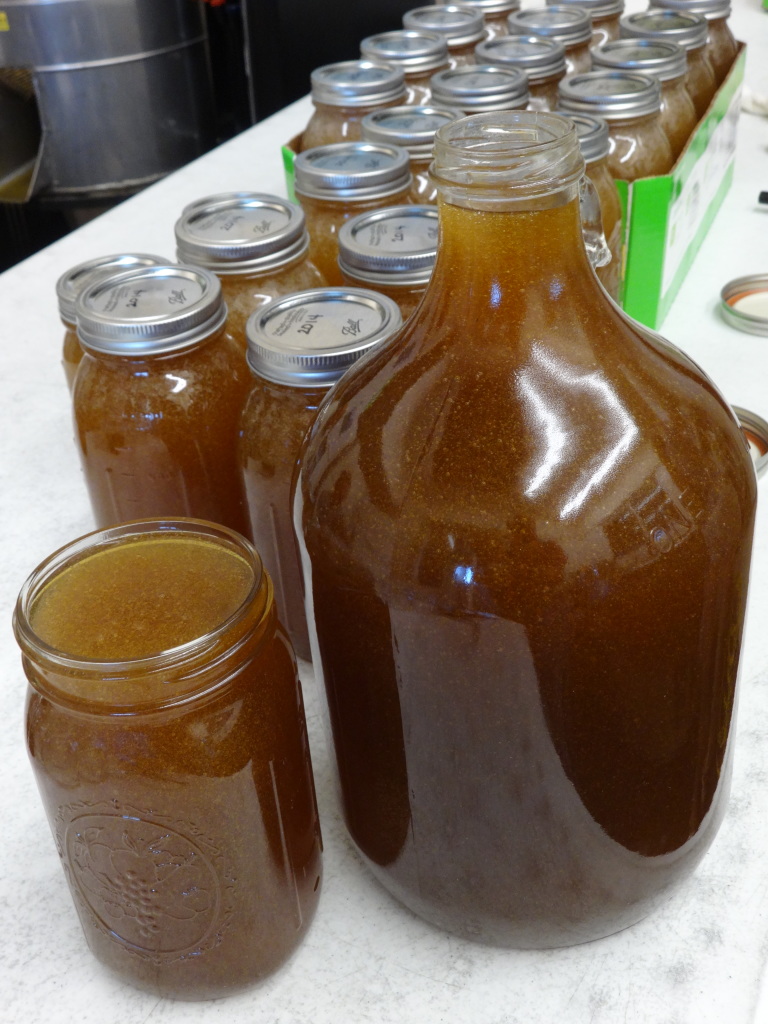
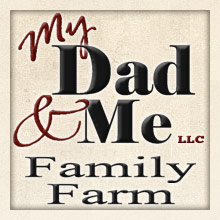
David are you finding that you have less hive beetles with the chickens being able to peck around that area? I have about 7 that are “free range” layers and they are over there all the time. I am hoping they are eating hive beetles since they reproduce in the dirt. What are you doing with your frames afterwards? We went to plastic frames and I do like them.
I don’t seem to have very many hive beetles; just the very occasional one. I didn’t even think about the chickens – they must be helping! I let the bees clean up the frames after we extract, then I just put them in empty supers and stack them on a piece of plywood on a pallet with tin on top. Not ideal, but so far it’s working. Haven’t tried plastic; mostly I need to put in some fresh foundation and paint the supers I’ve got!
I do think the chickens help. I have not had a problem yet either. I read that a guy poured a concrete foundation and set his hives on it. Since it was concrete the hive beetles could not multiply and he never had hive beetles. But, they do come up from the dirt…go chickens! ha I let my bees clean the frames up too but I always wonder if I should freeze them afterwards. I bought a swarm catcher vacuum thing this year…if you ever need it holler. The year I buy it none of them swarm! go figure! ha